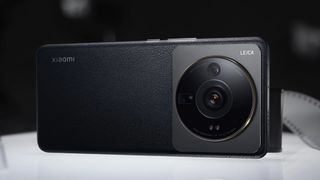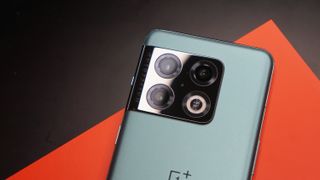Phone makers' obsession with camera brand partnerships has to stop
It might seem Leica good idea, but it isn’t

Some of the biggest phone makers in the world seem to have their hearts set on teaming up with established camera brands in the hopes of dressing their latest smartphone snappers with an additional level of prestige. But do these partnerships help or hinder the camera phones they grace and the people buying them?
On July 4, Xiaomi launched its freshly upgraded flagship phone series – the Xiaomi 12S line – and introduced us to the first of the company’s handsets to feature camera hardware sporting the Leica name.
This is #Xiaomi12SUltra, our top imaging flagship smartphone. #Xiaomi12SSeriesLaunch pic.twitter.com/QUDC2mmSFcJuly 4, 2022
Leica – the German optics specialist known for its pricey-but-capable cameras – is one of several established camera brands that have joined forces with assorted phone makers over the years. Most recently, it kicked off a freshly minted relationship with Xiaomi after its long-standing contract with fellow Chinese phone maker Huawei ended.
While Leica is one of the most high-profile names involved in these partnerships, it's not alone. Hasselblad and Zeiss (formally Carl Zeiss) have also entered into relationships of a similar nature.
Hasselblad formerly worked with Motorola on an optical zoom camera mod for its Moto Mods accessory line and, more recently, buddied up with siblings OnePlus and Oppo (as well as DJI in the drones market). Zeiss’ history stretches back even further – to Nokia’s pre-iPhone market dominance – alongside more recent work with Sony and Vivo.
#NoFilter
Rather than offering components or engineering smarts to a phone maker's imaging team, the most common manifestation of a camera brand's involvement takes the form of exclusive filters, dedicated shooting modes, and some light in-camera-app branding.
Huawei's first Leica-branded smartphones – 2016's Huawei P9 and P9 Pro – offered a series of Leica-developed color modes (meant to echo the company’s own cameras), and Leica-designed lenses (although they were still made of plastic and not manufactured by Leica).

Fast-forward to today and OnePlus' current flagship – the OnePlus 10 Pro – sports both 'Hasselblad Master Styles' (read: more filters) and something called XPan mode: a shooting experience modeled after the camera company's unique 65:24 format cameras, built into the native OnePlus camera app.
An instant win for mobile photography lovers everywhere or a selling point that only the most avid Hasselblad fans would conceivably use to justify their purchase of OnePlus’ latest phone? I’ll leave you to be the judge.
Curious to see what’s next from OnePlus? Check out our OnePlus 10T hub for all the latest details.
Let's talk numbers
While perusing brand forums, paired with anecdotal conversations with users, suggests a general indifference to camera brand partnerships on phones, a recent survey of 1,100 readers conducted by Android Authority revealed that over half of those polled (53%) didn’t think such integrations led to better end-result photos. A further 30% said the benefits were only ‘sometimes’ tangible.
In the case of the agreement between OnePlus and Hasselblad, the partnership is on record as costing a cool $150 million, which begs the question: why didn’t OnePlus simply invest that money into its own camera system research and development instead? The OnePlus 10 Pro would have offered an even more competitive camera system at the expense of XPan mode, a couple of filters and Hasselblad’s name across the phone’s back – which, if you ask me, is a worthwhile trade-off.
In the case of Xiaomi’s new trio of high-end devices, one of the more meaningful imaging benefits isn’t born from the company’s team-up with Leica but rather the efforts it’s gone to with the help of Adobe; adding deep Adobe Camera RAW support that allows for color correction metadata to remain embedded within DNG files snapped with the phones’ powerful camera.
It’s a more meaningful partnership for those serious about mobile photography, but one that’s sidelined by the company’s preferential treatment of the Leica brand over Adobe when it comes to cameras.
Best of both
While it isn’t the only brand doing so, Sony has struck perhaps the most encouraging balance with its smartphone camera systems (most recently represented by the Sony Xperia 1 IV). Sony is uniquely positioned as a maker of some of the best cameras out there while also serving as one of the principal suppliers of mobile imaging hardware used by some of the market’s best camera phones.
While offering what is consistently seen as a more involved mobile photography experience compared to rivals, Sony has established a cycle of investment and refinement with the camera technology found on its flagship Xperia 1 line that delivers far more meaningful functionality to users. Not to mention, its ongoing brand partnership with Zeiss is well-considered and unobtrusive. The company’s T* lens coating improves image quality without the need for unnecessary filters or modes plastered throughout the camera UI.
Companies like Xiaomi will likely continue to try and turn heads with the promise of camera prowess, supported by trusted names from the imaging business. However, my hope is that they’ll eventually pour the same amount of energy and money they would have used to strike such deals into making their camera phones better on their own terms – building, rather than buying, trust in users directly.
Get the best Black Friday deals direct to your inbox, plus news, reviews, and more.
Sign up to be the first to know about unmissable Black Friday deals on top tech, plus get all your favorite TechRadar content.

Alex joined as TechRadar's Senior Phones Editor in June 2022, but brings over a decade's worth of experience to the role, with an expertise in smartphones, tablets and wearables. He's covered keynotes hosted by the biggest brands and attended the launches for some of the most influential mobile products of the last few years. His experience was amassed at some of the most reputable consumer technology publications out there, including GSMArena, TechAdvisor and Trusted Reviews.
Most Popular

